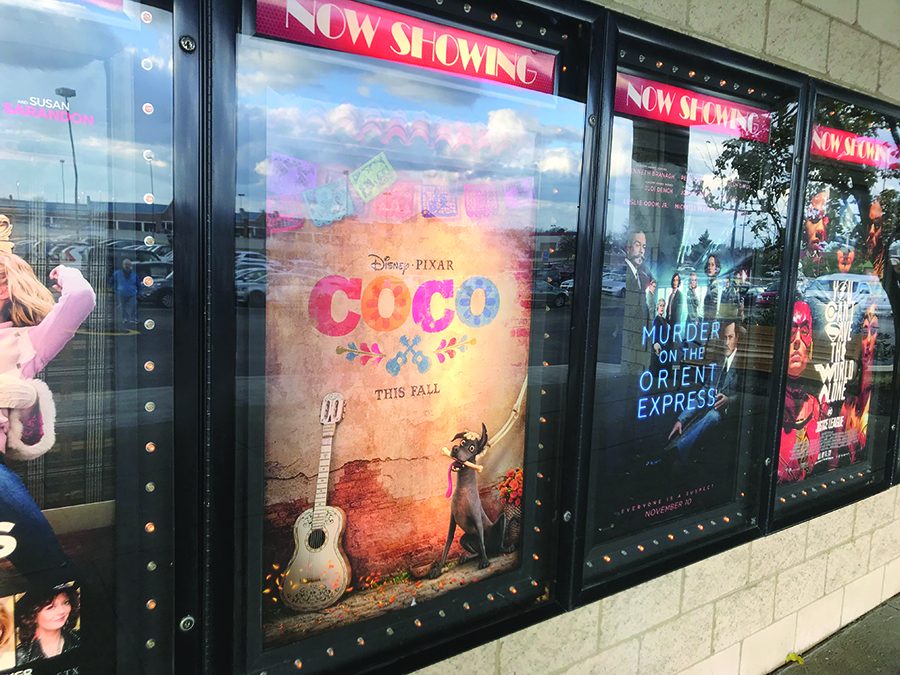New Pixar film “Coco” unoriginal but visually stunning and well done
Photo by Matt Petras
November 28, 2017
There’s a scene toward the end of “Coco” that really tore my heart out. Tears welled on my face, for different reasons, I assume, than the baby a few rows from me.
Pixar’s latest meets the basic criteria expected by the animation studio’s movies – while they’re kids’ movies on the surface, there’s enough meat to engage adults as well. It’s a pretty, funny, moving and thoroughly well-crafted film, despite being one of Pixar’s least original and inventive efforts.
“Coco” follows Miguel, a little boy who desperately wants to be a musician like his famous great-great-grandfather. His family doesn’t approve, however, because said relative abandoned his wife and kid to pursue his art. Whenever “Day of the Dead” approaches for the Mexican family, Miguel finds himself in the land of the dead, able to meet his deceased family members, including his beloved great-great-grandfather.
By now, the folks at Pixar could write a screenplay in their sleep. “Coco”’s story is compelling, aided by lovely pacing, funny gags, touching moments and clever twists.
It’s visually stunning too. The trailers give it away, but the moment Miguel enters the land of the dead and sees the entire, sprawling city, complete with complex architecture and a bevy of differently colored lights, is downright whimsical. There’s also lots of wonderful tunes strewn throughout the movie, many of which are sang by 13-year-old Anthony Gonzalez, who voiced protagonist Miguel. His voice acting throughout is adorable, and his singing is even better.
It’s important to note that Gonzalez’s Miguel is the first person of color to star in a Pixar film. Historically, Pixar’s films have been incredibly white, so to see a movie that more or less exclusively features Latino characters is great. It’s particularly important for media that attract a younger audience to be diverse, because it assures minority children that their stories are worthwhile, too.
As well-done as “Coco” most certainly is, it’s also nowhere near as fresh as Pixar films like “Toy Story” and “Inside Out” were when they released. Many have pointed out that “Coco,” at least aesthetically, is similar to “The Book of Life,” another animated “Day of the Dead” film that came out in 2014. The concept of animated characters exploring the realm of the dead is well-tread in general, too, considering films like “Corpse Bride.” The most focal theme in “Coco,” that being the idea that dead loved ones don’t fully die if you keep the memory of them alive, was also just explored in the stop-motion film “Kubo and the Two-Strings” last year.
At the end of the day, most films repeat old ideas, but it’s hard to ignore such recent and similar examples in the case of “Coco.”
Still, for much of the audience, particularly the young children, this criticism will be moot. What sticks out the most about “Coco” is not its lack of creativity relative to Pixar’s best efforts, but its basic effectiveness as a film. There are scenes that will undoubtedly stick with me, and I’m sure many others, for years to come. “Coco” is worthy of awe, giggles, tears and, most of all, smiles.


















